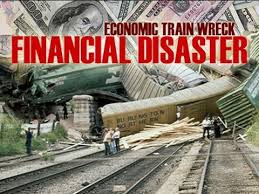Decade post the 2008 financial crisis, investment professionals still remain vary about unchecked market bubbles that could burst and trigger fresh economic shocks anytime.
The accelerating progress of student loan debt in the United States compared equivalent to the pre-crisis growth of subprime lending activity, has become a cause for concern. Reports suggest that the total amount of student loans outstanding in the United States exceeds 1 trillion USD.
A recent report from the US Department of Education found that the class of 2015, the most recent class of graduates, is the most indebted in the US history graduating with “a total of about $56 billion in public and private loans,” and the average student borrowing will be more than $35,000 in debt. Average tuition, fees, and room and board at a private, non-profit, four-year college were $42,419 for 2014-2015, up from $30,664 in real dollars in 2000-01 .Holders of undergraduate degrees, who tend to borrow less, may be able to meet their loan payments if they successfully find employment at the standard starting wage.
Though there are no derivatives or complex securitized products tied to student loans that could trigger a sudden, unexpected collapse in financial markets. However, the size of the total debt outstanding means that debtors changing their repayment behaviours could still have profound economic consequences. There is increasing holding back by indebted student when it comes to auto spending, home ownership, and general economic activity dragging the economy, adversely impacting the household spending behaviour of younger Americans. Ultimately, the reduced consumer spending resulting from excessive student loan debt could likewise have serious consequences.
Owning a home used to be a key indicator of adulthood and maturity. But homeownership has plummeted among Americans under age 35. Mortgage lenders look at all debt obligations, and student debt would count toward that, which downgrades their housing expectations, and take out a loan lower than what they intended. The burden of student debt hinders innovation and entrepreneurship, a core component of the economic prowess of the United States. And it can have a ripple effect on the market.
Click here for government certification in Accounting, Banking & Finance



13 Comments. Leave new
Good job!!
very informative….loved it !
Very nice article!
Good work
The inefficiency in payment of long overdue student loans might have something to do with the declining quality of employment opportunities.
Informative
Another side effect of financial crisis .good work by putting light on this topic
well written and informative article
Great effort…!
Fascinating !
liked it !
informative
Nice one